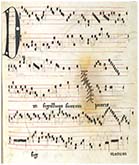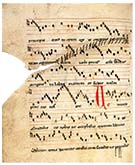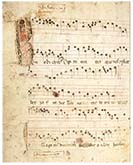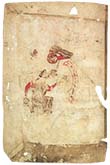Codex Las Huelgas
(Códice de canto polifonico)

Discovered by two monks in 1904, the Códice de canto polifonico, or Codex Las Huelgas, is a liturgical codex copied sometime between 1300 and 1325. It was preserved in the Las Huelgas convent founded by Alfonso VIII in Burgos, Spain. This codex is an important piece of musical and cultural history, as there is a strong possibility it was created for the use of the Las Huelgas nuns, who may have performed many of the pieces contained within. The codex comprises both monophonic and polyphonic pieces, in forms popular from the 11th to the 14th century, such as conductus, sequences, tropes, and motets. Nearly 190 pieces are included, and over half of them are unique to this manuscript.
This facsimile reproduction of the original Codex was created as a joint project of the publishing company Testimonio and the National Heritage agency of Spain. Using state of the art processes, specially manufactured paper, and great attention to detail, the codex has been faithfully reproduced here within a leather binding, which is tooled in a 13-15th century Gothic style. One of a limited edition of 980 copies, this codex is a beautiful and distinctive addition to our collection.
(Click on each image to enlarge. Image will open in a new window.)




